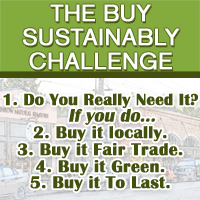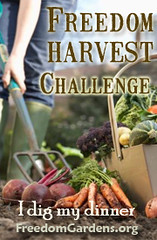As you know, I’ve been really bored lately. I’m not well enough to do much, but I’m well enough to get really bored, easily. Looking at my yogurt butter recently, I noticed it had partially hydrogenated oils in it. Oh hell no. ::finger wag::
I originally picked up Brummel & Brown because I compared the calories and fat in it with similar butters and spreads. But as we all can attest to, calories and fat don’t tell you the whole story. So what is the whole story?
What the heck is hydrogenation?
Hydrogenation occurs when you add H2 (hydrogen) to heated oil. If you fully hydrogenate you create a solid fat out of the oil. But if you only partially hydrogenate you get a semi-solid – the consistency of butter.
Except it’s a lot cheaper than butter.
Partially hydrogenated oil are trans fats, and are pretty much poison for your body. Think arsenic or cyanide-type poison. Sure, it won’t kill you immediately, liked those will, but it helps lead to coronary disease by lowering good cholesterol and raising bad cholesterol.
And it’s EVERYWHERE. Most of it is partially hydrogenated soybean oil. Luckily, lots of things say nowadays that they have ZERO trans fats, but you know what? A product can have up to 0.5 grams (500 mg) of trans fat in a standard serving and still claim 0% trans fats. So all a company needs to do is change its serving size to make sure the amount of trans fat is less that 0.5 g and it can plaster that nice fat 0 all over. Nice labeling system, huh?
There’s no maximum daily recommended amount of trans fats. You are just recommended to get as little as possible. Unlike saturated and unsaturated fats, unlike even cholesterol – there’s no guidance out there that you should only get so much a day. Nope, they don’t want to even give you a limit. That’s how bad it is for you.
And don’t forget, if you go out to eat, unless there’s a trans fat ban in your town, most restaurant breads and fried foods are loaded with trans fats. It’s really hard to get away from it. So, you can see why I’m pretty wary. I don’t have any heart disease, nor a family history of it, but I do want to stay as healthy as I can.
So I started looking at different kinds of spreads and butters out there. I like spreads, because they’re easier to use. Nothing worse than shredding your piece of bread with a rock hard pat of butter. But looking through each one, there was all this crap added. In frustration, I decided to start looking at sticks of butter. Better options there. Ingredients in Land o’ Lake (regular, not light) butter? Sweet Cream. Salt. Beautiful. But then it had: Natural Flavors.
What is a natural flavor?
Under the C.F.R. (that’s the Code of Federal Regulations) a natural flavor is “the essential oil, oleoresin, essence or extractive, protein hydrolysate, distillate, or any product of roasting, heating or enzymolysis, which contains the flavoring constituents derived from a spice, fruit or fruit juice, vegetable or vegetable juice, edible yeast, herb, bark, bud, root, leaf or similar plant material, meat, seafood, poultry, eggs, dairy products, or fermentation products thereof, whose significant function in food is flavoring rather than nutritional.” (21 CFR 101.22).
But that doesn’t mean they’re actually natural, it just means they’re derived from a natural product. Natural flavorings are most often made from chemicals, but they are considered derived from a natural product because they taste like an apple, or lemon, or something that can be found in the natural world.
Now what are they trying to make my butter taste like?
So my frustration continued and I finally decided to just make my darn butter myself. Then I would know exactly what went into it. How hard could it be?
To tell you the truth, not hard at all.
I bought a pint of Battenkill Creamery heavy cream. There was my ingredient for butter. Solely cream. No natural flavoring, no artificial coloring, no trans fats.
I poured it into my Kitchen Aid mixer bowl. Hard so far, isn’t it? 🙂

Then I put on the splash guard (just in case, but it didn’t really splash that much) and put on the wire whisk, and started the KA on high. I thought it would only take a few minutes, but five minutes later I still only had whipped cream.

Mmm, yummy…
I kept the mixer on high for awhile longer, but I started wondering if this was going to work and if I bought the right cream. But soon it started turning …curdled? I don’t know what you call this.

It was getting sort of crumbly, turning into butter and separating from the buttermilk. Then it started turning into real butter!

I poured all the buttermilk into a pyrex and plan to make some buttermilk pancakes for my hubby this weekend!

Apparently two cups of cream leaves you with 1 cup butter and 1 cup of buttermilk.
I poured out all the buttermilk I could, then rinsed the butter. You don’t want any buttermilk left in the butter – it’ll turn the butter rancid quickly. So I squeezed it all together, then poured some ice water into the bowl, rinsed, and repeated – three times. It’s interesting to note you don’t have to worry about the water – it will not mix with the butter!
And at the end – real butter!

How does it turn butter yellow when the cream is white? Hmm…things that I ponder 🙂
I was thinking I should make whipped butter to make it easier to spread, but it wasn’t that hard anyway. We’ll see how it firms up in the fridge.
I also made unsalted butter, but you can add 1/4 to 1/3 tsp of sea salt per cup of cream to make salted butter if you want.
The whole thing took me about 15 minutes – definitely doable on a continuing basis. And I know exactly what went into my butter – CREAM!
Filed under: Cooking | Tagged: butter, cream | 7 Comments »













